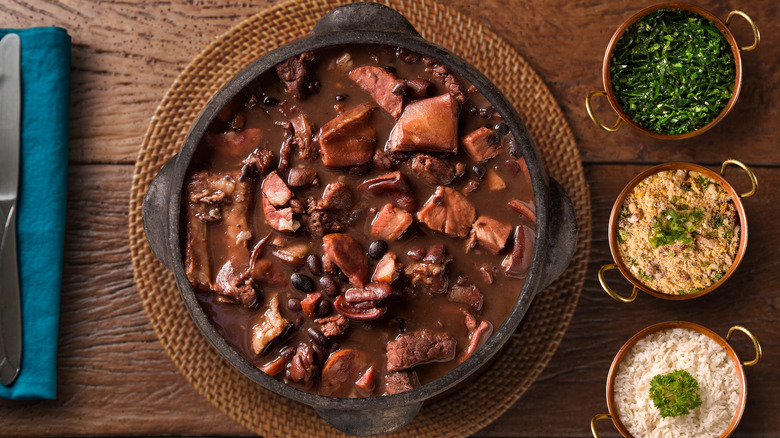Most Of The World's Black Beans Come From This Country
Indigenous tribes of the Americas have been living in the New World for just about 24,000 years, according to radio-dating analysis (via The Atlantic). That means that for thousands of years, until the invasion of European colonizers in the 15th century, Indigenous peoples in the North, Central, and South Americas were able to explore and cultivate a deep understanding of the native plants thriving in these areas. We are now familiar with many of these crops ourselves because we consume them widely on a global scale. ScienceDirect estimates that 60% of our world's current food supply originated from the Americas. These foods include corn, beans, tomatoes, squashes, and so many more fruits and vegetables that give us the nutrients we now rely on to survive.
Crop cultivation in the New World began around the same time as in the Old World. According to National Geographic, we have dated the cultivation of cereal crops to the Fertile Crescent around 11,300 years ago and squash in today's Mexico about 10,000 years ago, meaning that crops and farming were advancing around the same time in both the New and Old World. And one of the most remarkable and delicious crops indigenous people nurtured was the black bean.
Feijões Pretos
To this day, black beans are still predominantly grown in South America, specifically in the country of Brazil. According to The Western Producer, Brazil grew 438,240 tons of black beans in 2021, which was a remarkable leap upward from the year before. Not only do Brazilians farm most of the world's beans, but they eat most of them too! Beans are a huge part of Brazil's culinary scene. Meals like the feijoada — a black bean and beef stew — which is the country's national dish (via BBC Travel).
According to AirGuide Destinations, Brazil's recent history of poverty, Indigenous genocide, and Atlantic slave trade has meant that for the past handful of centuries, beans have been a cheap and easy way to grow food that fills people's bellies. Beans were a huge part of the diet of impoverished people and kept Brazilian citizens alive during decades of food insecurity. Today, the black bean is mixed with soups, stews, meats, and rice and provides those who eat it with high fiber, protein, vitamins, and other nutritional benefits (via Healthline).

